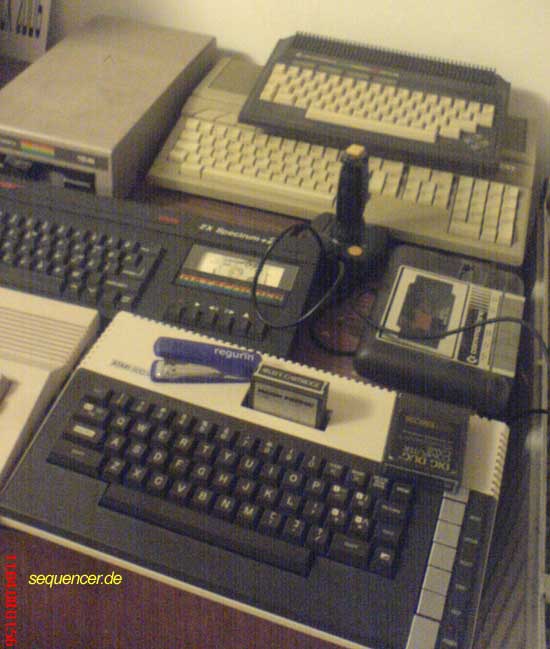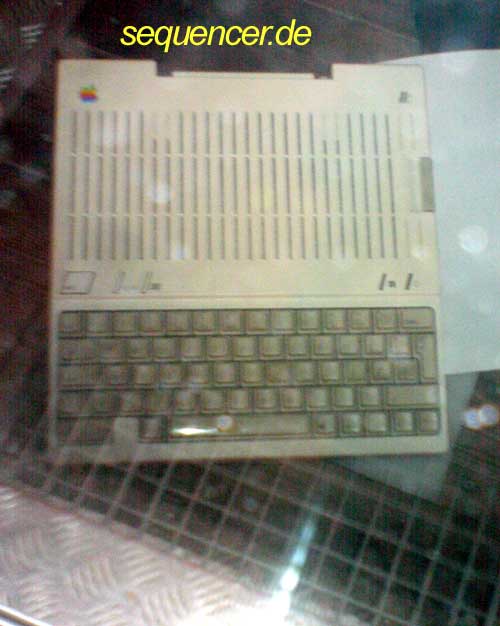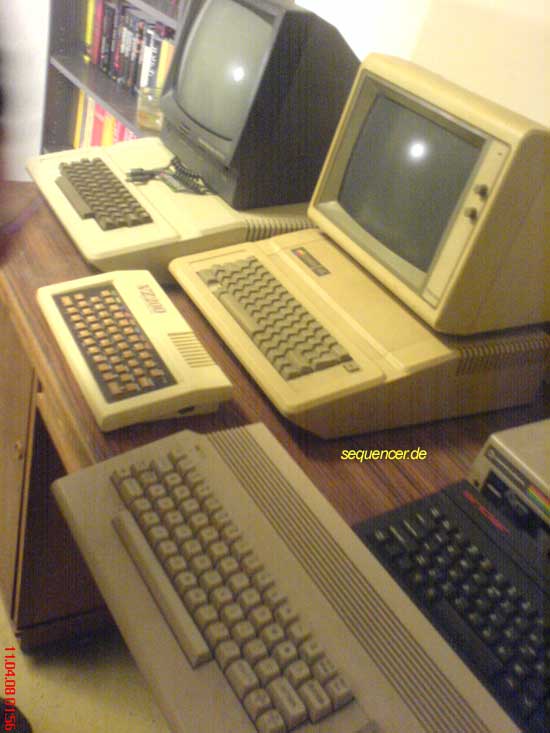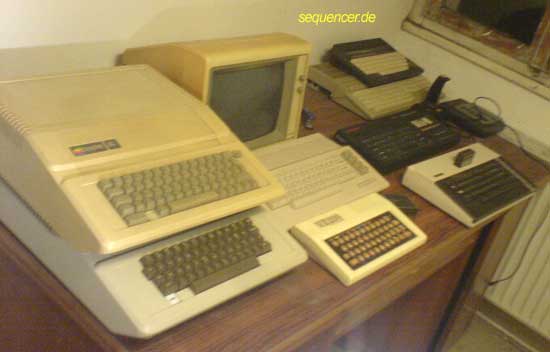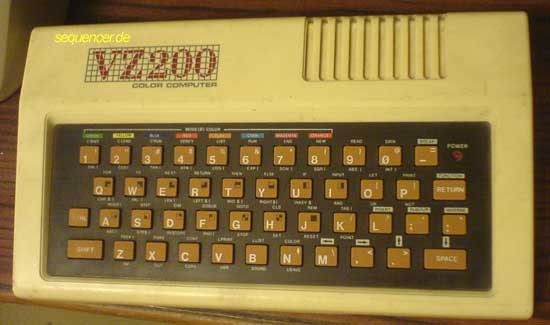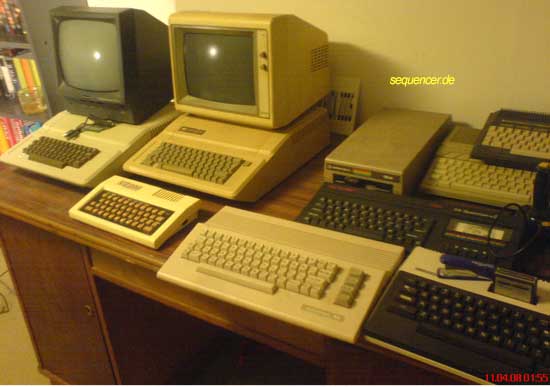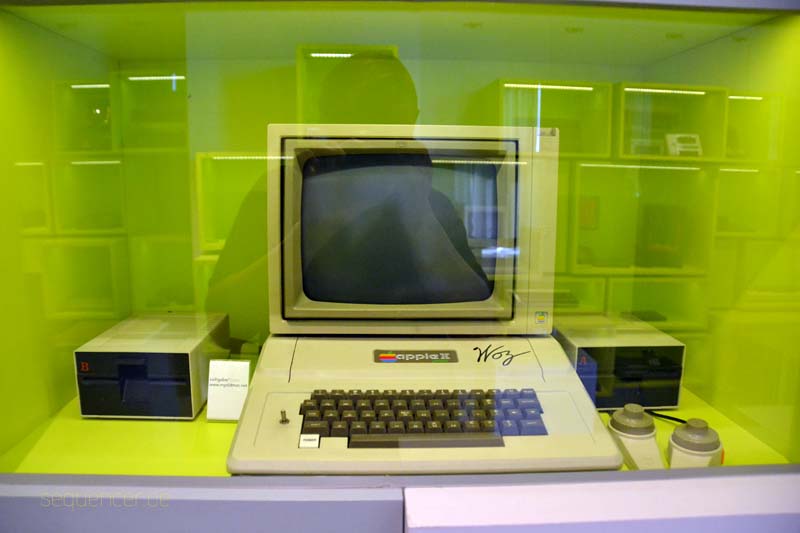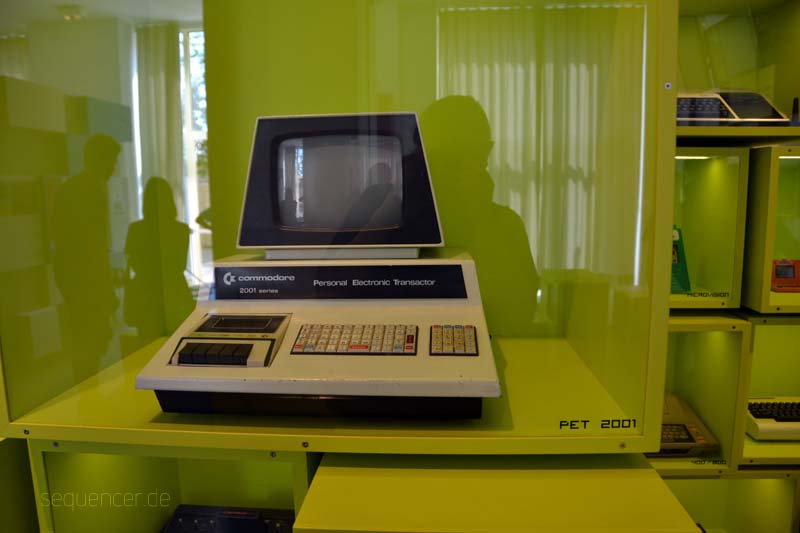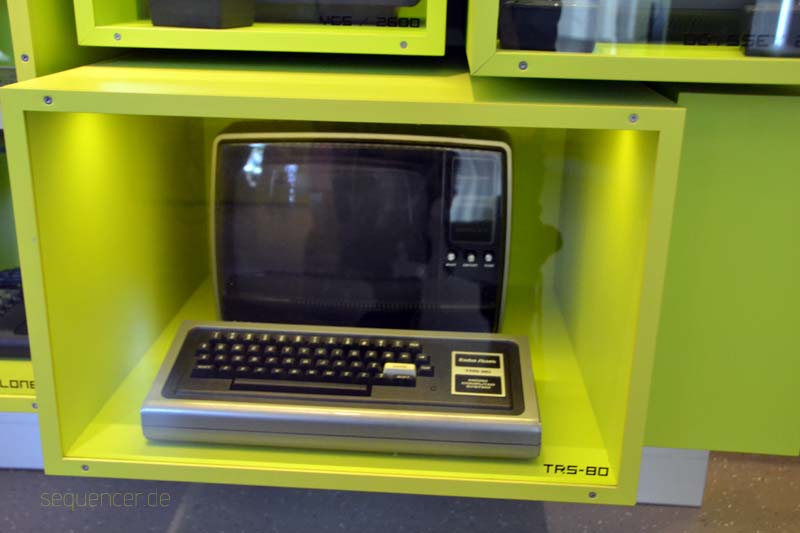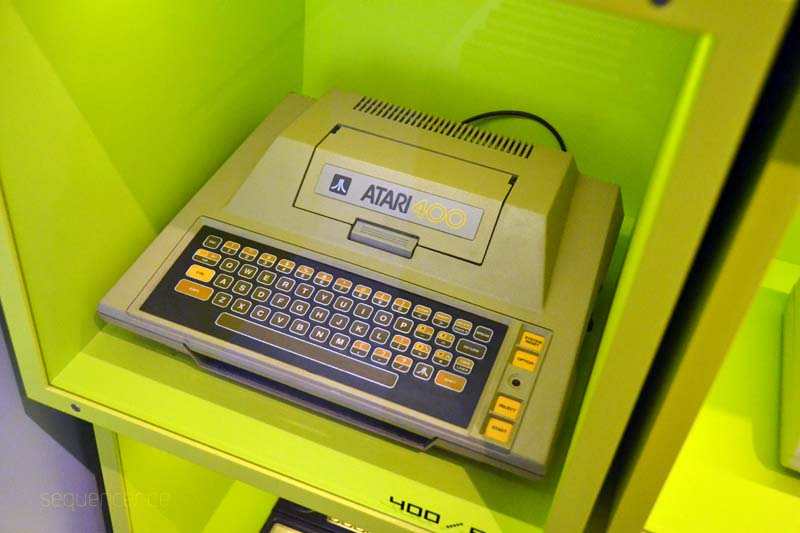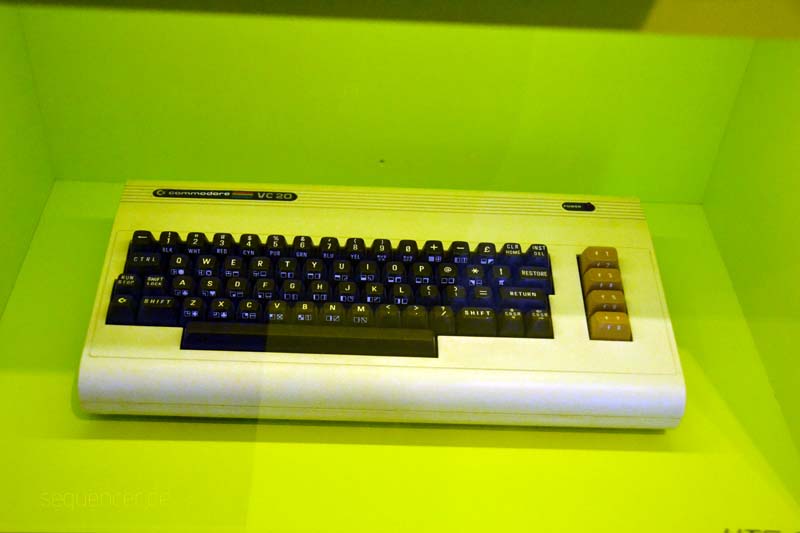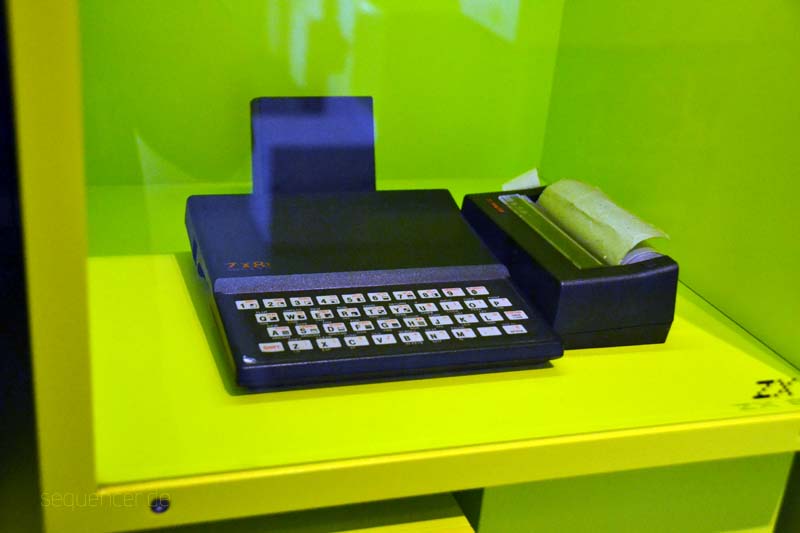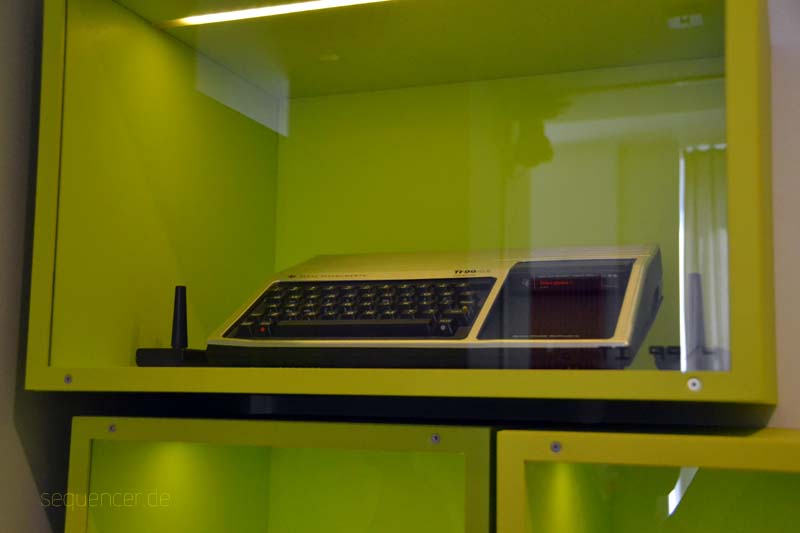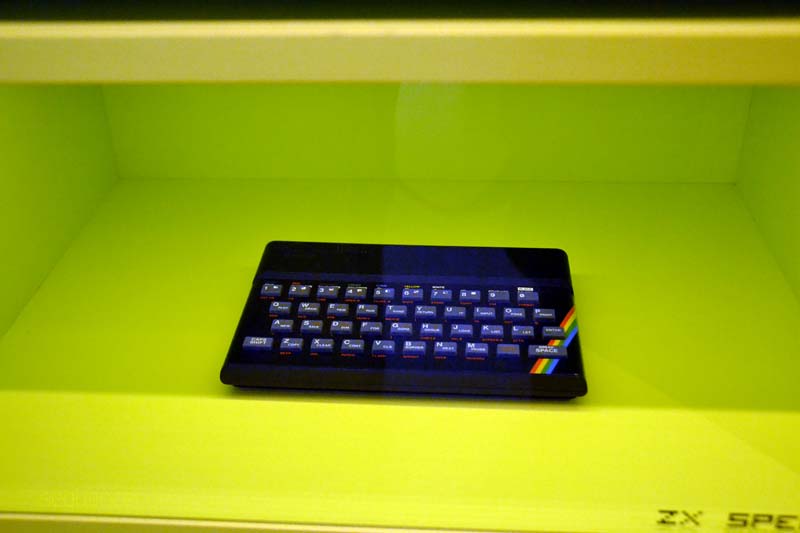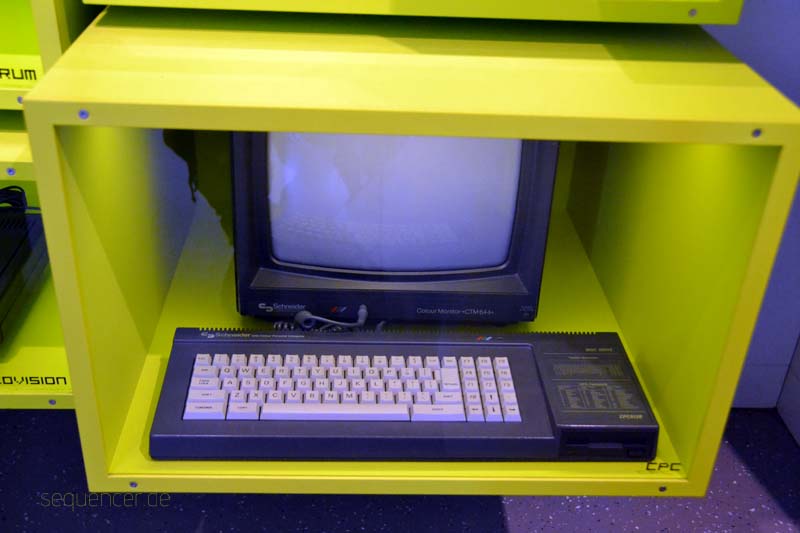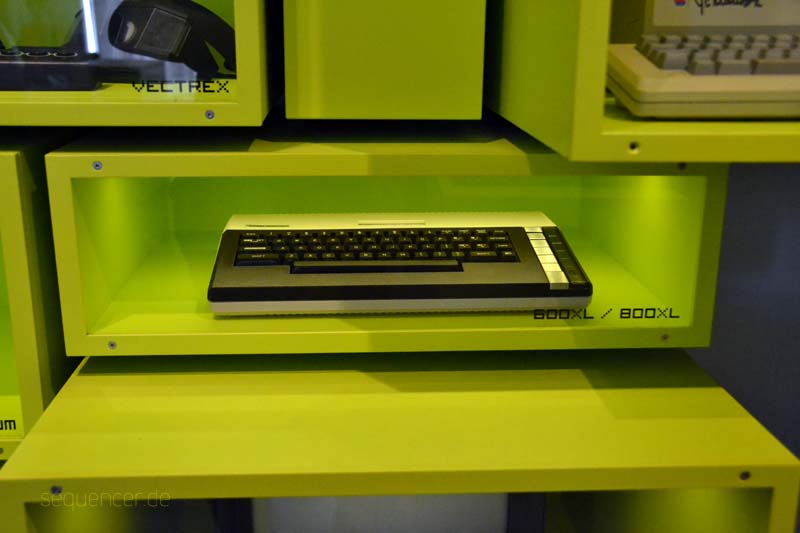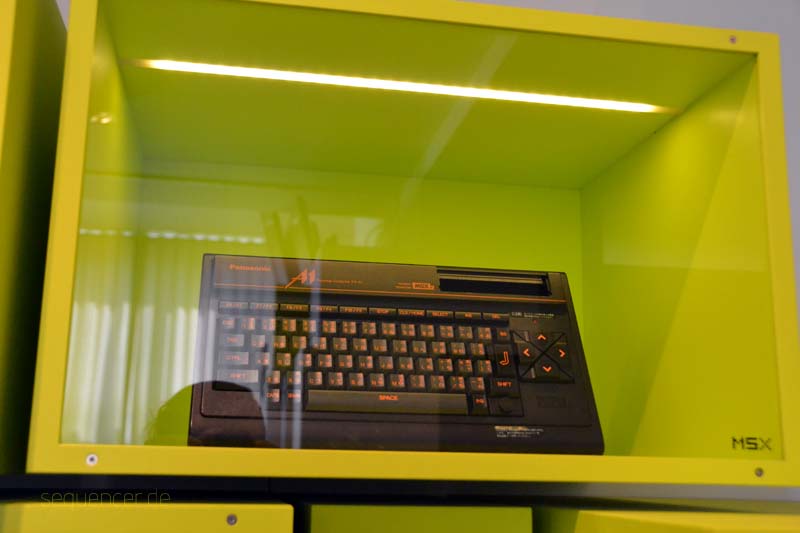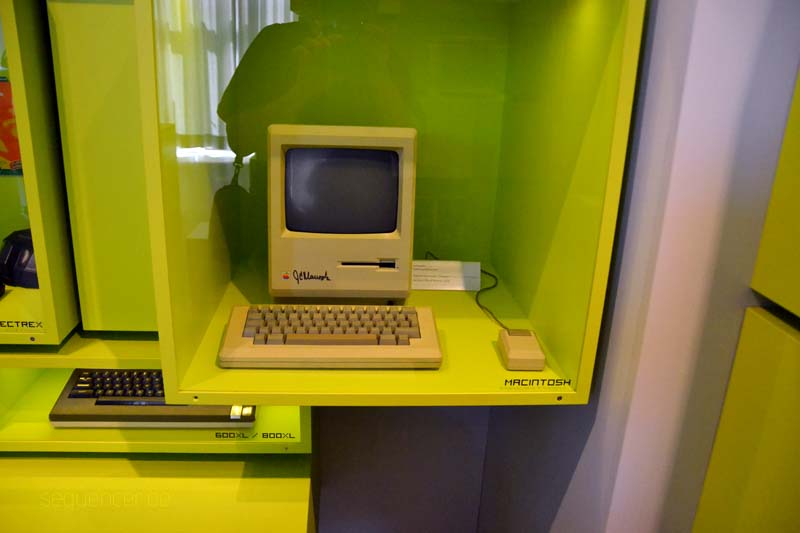8Bit: Unterschied zwischen den Versionen
KKeine Bearbeitungszusammenfassung |
KKeine Bearbeitungszusammenfassung |
||
| Zeile 8: | Zeile 8: | ||
[[Image:Atari_8bit.jpg]] | [[Image:Atari_8bit.jpg]] | ||
*The [[Atari]] 800XL (Foreground) / Background: Sinclair/Amstrad Spectrum 2+ | *The [[Atari]] 800XL (Foreground) / Background: Sinclair/Amstrad Spectrum 2+ | ||
Über den Sound der Atari Serie 400, 800, 600XL und 800XL - 4 Kanal mit wechselbarem Ton/Noise-Gemisch | |||
https://www.sequencer.de/synthesizer/threads/atari-800-800xl-sound-wie-arbeitete-man-in-8-bit-zeit-mit-sound-1979-1986.168227/ | |||
[[Image:Apple_IIc.jpg]] | [[Image:Apple_IIc.jpg]] | ||
Version vom 24. September 2023, 00:03 Uhr
8 Bit Processors, the early time of Computer CPUs, the 8 Bit comes from the Address bus which can operate with 8 pins (=256 directly addressable "steps"). so the bus width is 8 Bits (means 8 switches in binary 0 or 1 state)
in music this often refers to classic computers of the late 70s and early 80s like the
Commodore C64 or the Apple II Series or even the Sinclair Computers (ZX81, ZX Spectrum etc.)
- The Atari 800XL (Foreground) / Background: Sinclair/Amstrad Spectrum 2+
Über den Sound der Atari Serie 400, 800, 600XL und 800XL - 4 Kanal mit wechselbarem Ton/Noise-Gemisch https://www.sequencer.de/synthesizer/threads/atari-800-800xl-sound-wie-arbeitete-man-in-8-bit-zeit-mit-sound-1979-1986.168227/
- Apple IIc
- 2x Apple II - Apple IIe + Standard Apple 2 (also written Apple][, Apple 2 / Apple 2e
- again Apple II Series in Foreground, 8bit DIY base.
- Laser VZ200 Clone by Dick Smith Electronics
- Some 8Bit Computers exept the Atari ST - it's 16 Bit - It's Commodore Plus 4, C64 II, Sinclair Spectrum 2+ by Amstrad (world) / Schneider (germany), Apple II + IIe, Atari 800XL, Laser VZ200 Clone
the C64 eg. had a Sound chip (SID) aboard, which is in fact a 3 voice analog synthesizer. so this also counts in as 8bit sound as well as the Gameboy or other Homecomputer Sound Chips..
There are some Hardware Boards like HardSID and Software Emulations to get the authentic Sound into modern computers, but also real Synthesizer Hardware: The Sidstation by Elektron was based on the SID Chip (which was made by the people who did Ensoniq).
There is also a Music Scene (Micromusic) and some Artist who are very 8Bit and still use C64's, Gameboys and more..
- http://micromusic.net/
- Firestarter (live act) http://www.firestarter-music.de/
- Prophet64 Software Synthesizer for C64 http://www.prophet64.com/
- Zid (artist) http://www.reduced-listening.de/
- Sidstation http://www.sequencer.de/syns/elektron/SIDstation.html
showroom 8bit vintage
lets just show some classics of late 70/early 80's:
Apple 2 - the classic but quite expensive 2k DM. signed by Steve Wozniak "Woz" - 1977
Commodore PET 1980 - classic with built in tape recorder for data, still 70's
Tandy TRS80 - a classic of that time
Atari 400
Commodore VC20 - the VIC20 in the UK, 3.5k RAM
Sinclair ZX81 - my 1st computer - because it was affordable - b/w sceen and FAST mode blanked out the screen, 1K RAM but expandable to 64KByte later..
Texas Instruments TIi994a - Call Basic, Call Sprite.. a lot of CALL Commands in this one..
Commodore C64 theeee classic - 3 voice analog sound chip SID was made by Ensoniq (or to be correct - what became Ensoniq later) - totally classic
Sinclair ZX Spectrum (1982) has been rereleased in 2015 by Sir Clive as a game console via crowd funding - available as 48 and 16K - had a very good time with it learning after the ZX81
Amstrad in the UK bought it, in Germany marketed under the HiFi label Schneider: the CPC464 with built in tape recorder
Atari 800xl 4 synth voices! cool game machine and just type in "Bye" if you have one.
MSX they were a bit too late, but advanced basic. it's a collection of Japanese companies in mid 80's (1985) - so it is the least vintage of them all
16 Bit
Well the Atari ST and Amiga are of course 16 Bit - started with the Sinclair QL in 1985 and the Amiga followed - Amiga was aquired by Commodore and later released as a real full sized computer but it was made and designed as a console first., aaaand the one one with built in MIDI interface - the Atari ST series - ok - the MSX Yamaha CX5M with built in DX9-kind of 4OP FM synth in it had MIDI as well, but it wasn't nicely integrated into the BASIC environment which was a mess, so sad - since this machine would have been a lot more in the focus but MSX was 8bit and so Atari and Amiga were the ones - the QL had no desktop like the Mac - only command line with a superb BASIC but if course it coulnd make it to the hall of fame.
so these are just here because they are vintage and meaningful to musicians in 1986 - still 16bit.
the classic Mac wasn't at all affordable but it was 16 bit as well. but it was the machine to use for what became digidesign later sound designer and therefore an editor for early samplers - and yes - in 1984 I was just not able to get one of these - so one had to go for the clones - Atari and Commodore had to offer and they were completely different machines, don't forget the ARM Archimedes which was technically a very cool machine but - well you may know - then you are a NERD or you don't know and well for a reason..
